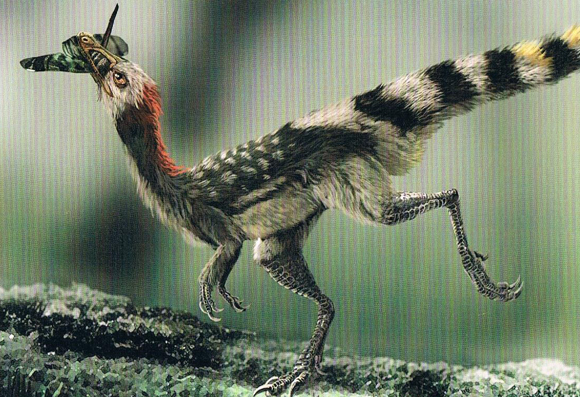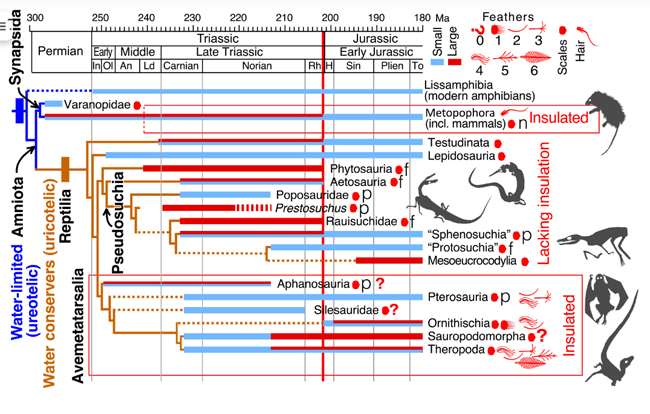Cold Climate Allowed the Dinosaurs and Pterosaurs to Thrive
Scientists propose that cold snaps killed off the competitors of the dinosaurs and pterosaurs at the end of the Triassic opening the door for a dinosaur dominated Jurassic. The researchers propose that dinosaurs and pterosaurs with their integumentary coverings including primitive feathers, were insulated from the cold, whereas many other types of reptile co-existing with them just had scales. It was the body coverings that permitted the Dinosauria and the Pterosauria to thrive in cold conditions, whereas many of the other reptiles became extinct.

Ice-rafted Debris Discovered in Lakebed Deposits
The research team which included Paul Olsen, lead author of the study (Lamont-Doherty Earth Observatory at Columbia University), examined sandstone and siltstone formations formed in lakebeds in China’s Junggar Basin. These deposits are Upper Triassic in age and at this time this part of China had a palaeolatitude of around 71 degrees north. It was well above the Arctic Circle. Footprints found by the researchers indicate the presence of dinosaurs. In addition, the lake sediments contained abundant small pebbles, and it was concluded that these pebbles represent ice-rafted debris deposits.

The Small Pebbles are Significant
The numerous small pebbles found amongst the fine siltstones and sandstones were probably deposited by melting blocks of ice. The research team, who included scientists from the Chinese Academy of Sciences, suggest that in the winter when the lake waters froze over, pebbles were picked up by the ice from the rocky lake shores. As the warm weather returned, the ice sheets would melt and chunks of ice would float away over the lake, gradually melting and as they did, they would drop the pebbles and other material.
Survival of the Fluffiest
The ice-rafted debris suggest freezing winters endured by dinosaurs. Around 201.6 million years ago, extensive volcanism which ejected millions of tonnes of debris into the Earth’s atmosphere lowered light levels and led to global climate change. Our planet endured a prolonged period of cold.
The cold decimated all medium-to large-sized non-dinosaurian, non-insulated continental reptiles. As they were adapted to cold climates, the Dinosauria and their cousins the Pterosauria were well placed to dominate terrestrial habitats as world temperatures plummeted.

Cold Climate
Lead author of the study Paul Olsen commented:
“They were [dinosaurs and pterosaurs] fundamentally cold-adapted animals. When it got cold everywhere, they were ready, and other animals were not.”
To read an article about integumentary coverings in the Pterosauria: Branching Feathers and Melanosomes Identified in a Pterosaur Fossil.
The scientific paper: “Arctic ice and the ecological rise of the dinosaurs” by Paul Olsen, Jingeng Sha, Yanan Fang, Clara Chang, Jessica H. Whiteside, Sean Kinney, Hans-Dieter Sues, Dennis Kent, Morgan Schaller and Vivi Vajda published in Science Advances.

